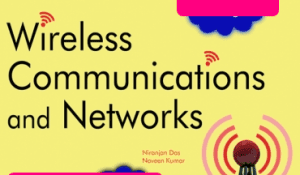Wireless Communication Network Notes -WCN Notes Pdf

Wireless Communication Network Notes
Notes 1 :
Download WCN Notes Copy 1 here
———————————
Notes 2 :
Download WCN Notes Copy 2 here
———————————
Unit I
Introduction To Wireless Communication Systems: Evolution of mobile radio communications. Examples of wireless communication systems. Paging systems. Cordless telephone systems. Comparison of various wireless systems.
Unit ll
Modern Wireless Communication Systems: Second generation cellular networks. Third generation wireless networks. Wireless in local loop. Wireless local area networks. Blue tooth and Personal area networks.
Unit lll
Cellular System Design Fundamentals: Spectrum Allocation. Basic Cellular System. Frequency reuse. Channel assignment strategies. Handoff Strategies. Interference and system capacity, Trunking and grade off service. Improving coverage and capacity, cell splitting.
Unit IV
Multiple Access Techniques For Wireless Communication: introduction to multiple access. FDMA. TDMA. Spread spectrum multiple access. Space division multiple access. Packet radio. Capacity of a cellular systems.
Unit V
Wireless Networking: Difference between wireless and fixed telephone networks. Development of wireless networks. Fixed network transmission hierarchy. Traffic routing in wireless networks. Wireless data services. Common channel signaling.
Unit VI
Wireless WAN : Mechanism to support a mobile environtnent. Communication in the infrastructure IS-95 CDMA forward channel. IS – 95 CDMA reverse channel. Packet and frame formats in IS – 95. IMT – 2000. Forward channel in W-CDMA and CDMA 2000. Reverse channels in W-CDMA and CDMA 2000 GPRS and higher data rates Short Messaging Services in GPRS mobile application protocols.
Unit Vll
Wireless Lan: Historical overviews of the LAN industry. Evolution of the WLAN industry, Wireless home networking. IEEE 802. 11. The PHY Layer. MAC Layer, wireless ATM. HYPER LAN, HYPER LAN – 2.
Unit VIII
Orthogonal Frequency Division Multiplexing: Basic Principles of Orthogonality. Single Versus Multi channel Systems. OFDM Block Diagram and its explanation. OFDM Signal mathematical representation.
TEXT BOOKS:
l. Theodore S. Rappaport . “Wireless Communications and Applictions,“ Pearson Education – 2003.
2. Upen Dalal, “Wireless Communications,” Oxford University Press, NIO.
3. Kaveh Pahlavan, Prashant Krishnamoorthy, “Principles of Wireless Networks. – A united approach,” Pearson Education. 2002.
REFERENCES:
1. P.I\’icopolitidis, M.S.Obaidat. G.I. papadimitria, A.S. Pomportsis, “Wireless Networks.” John Wiley & Sons, 2003.
2. X.Wang and l-I.V.Poor. “Wireless Communication Systems.” Pearson education. 2004.
3. Dr.Sunil Kumar S. Manvi. Mahabaleshwar S. Kalltasageri,”Wireless and Mobile Networks: concepts and Protocols.“ Wiley India, 2010.
4. Jon W. Mark and Weihua Zhqung.“ Wireless Communication and Networking,” PHI. 2005. I
5. Jochen Schiller. “Mobile Communications,” Pearson Education.2““ Edition. 2003.


very helpful, thanks